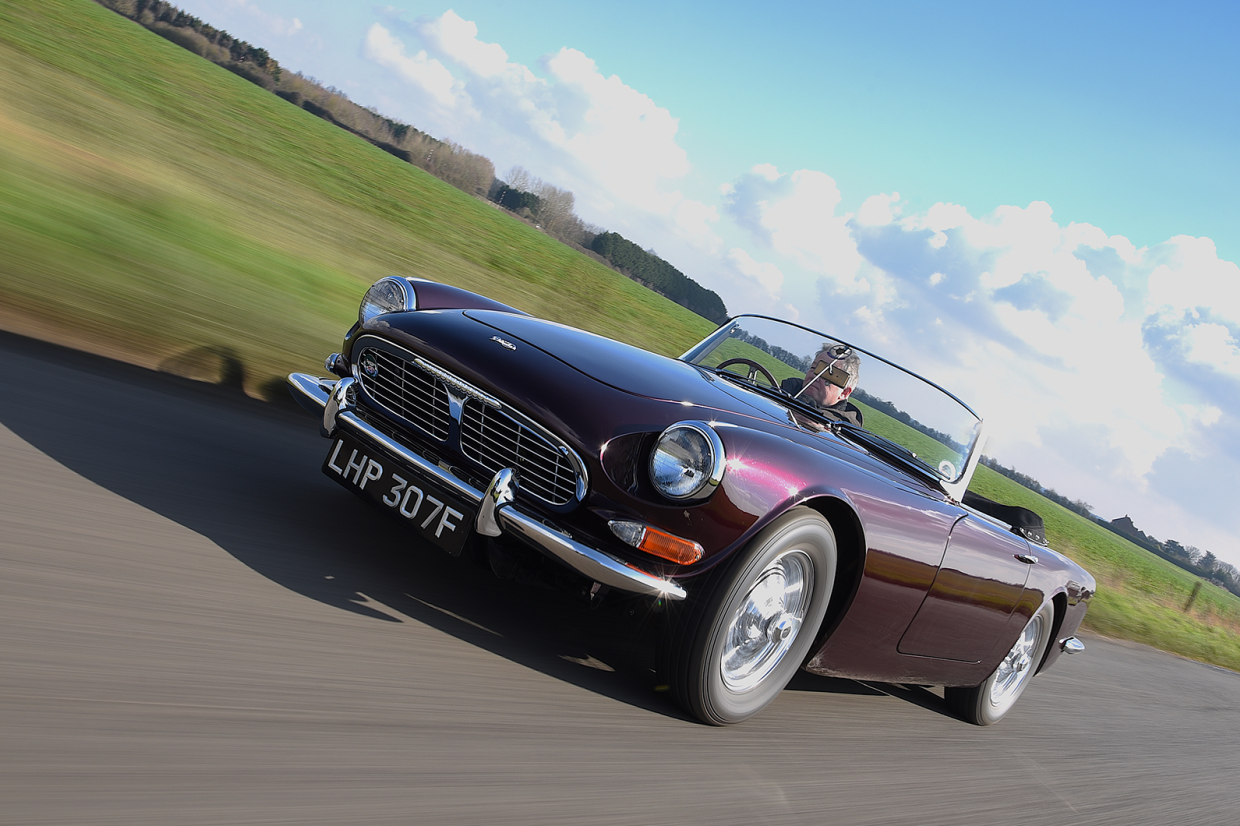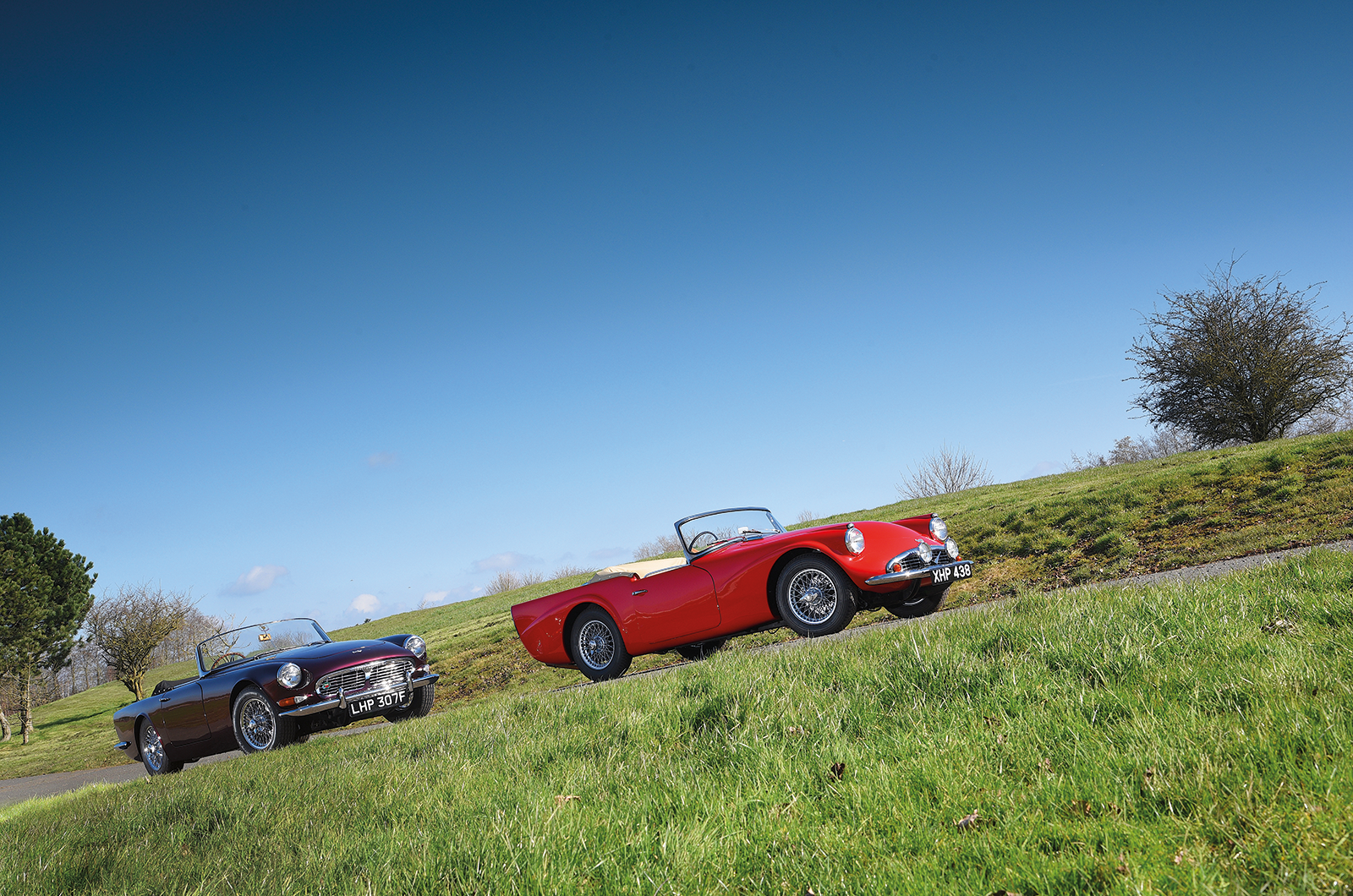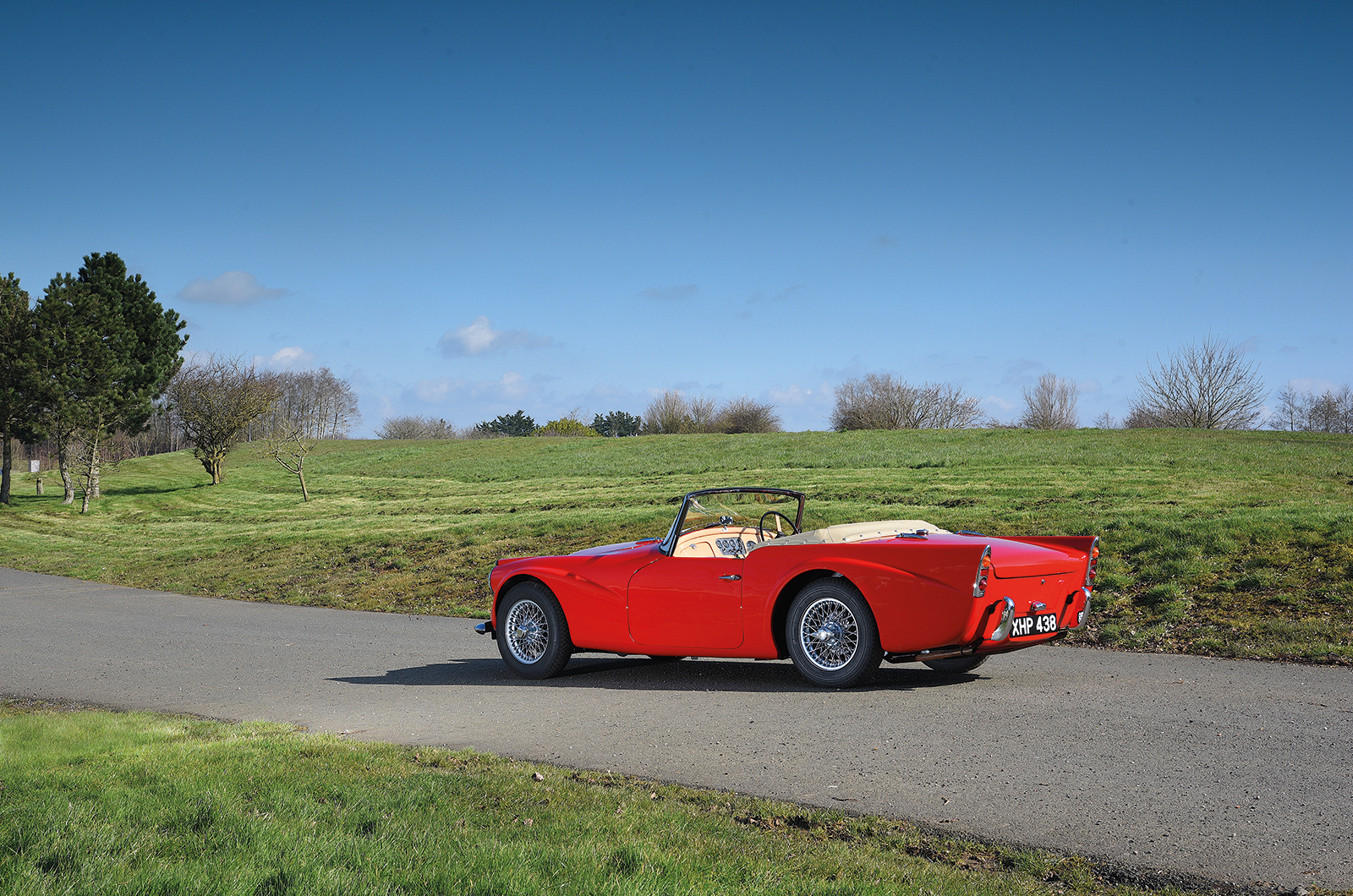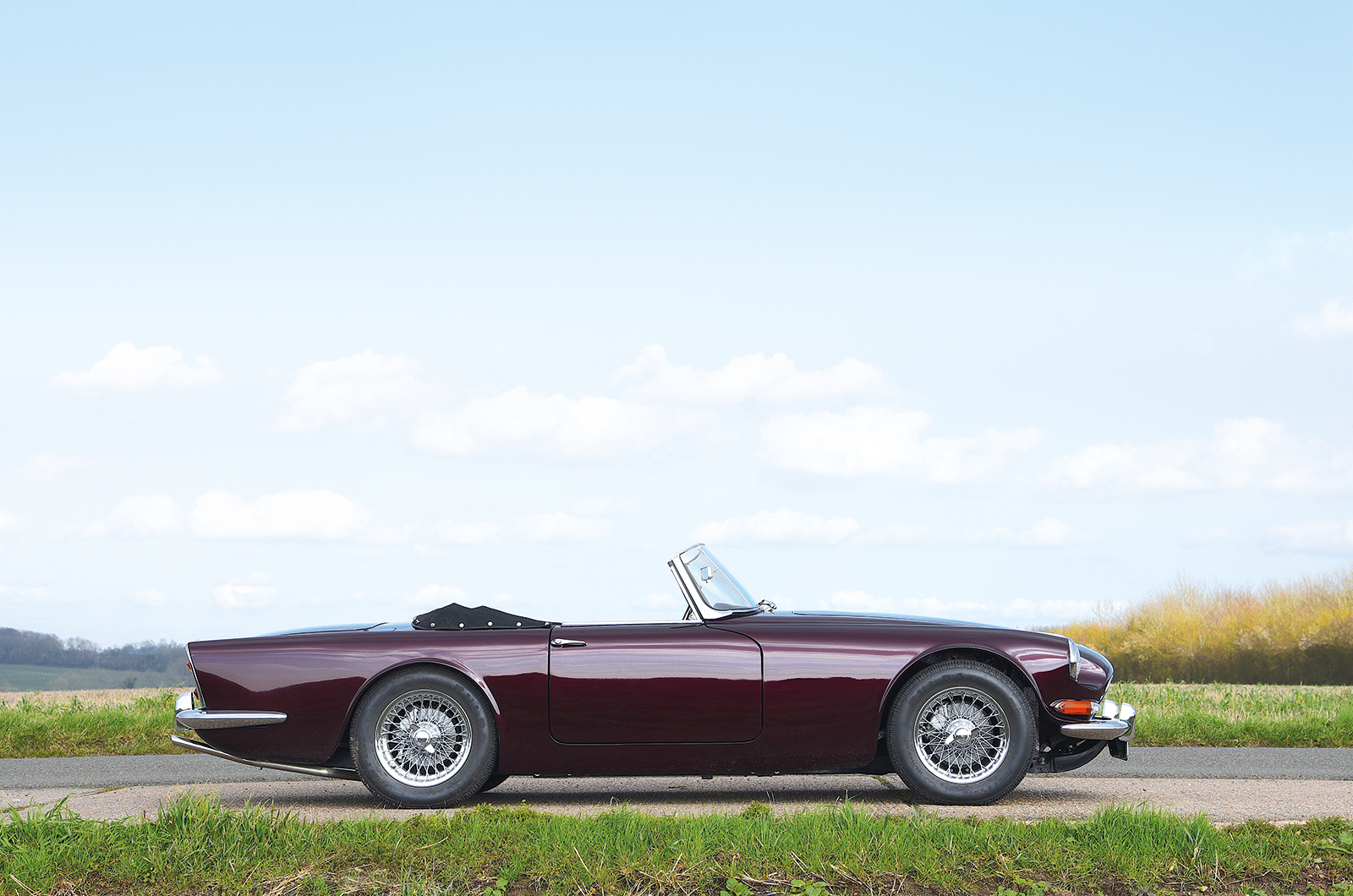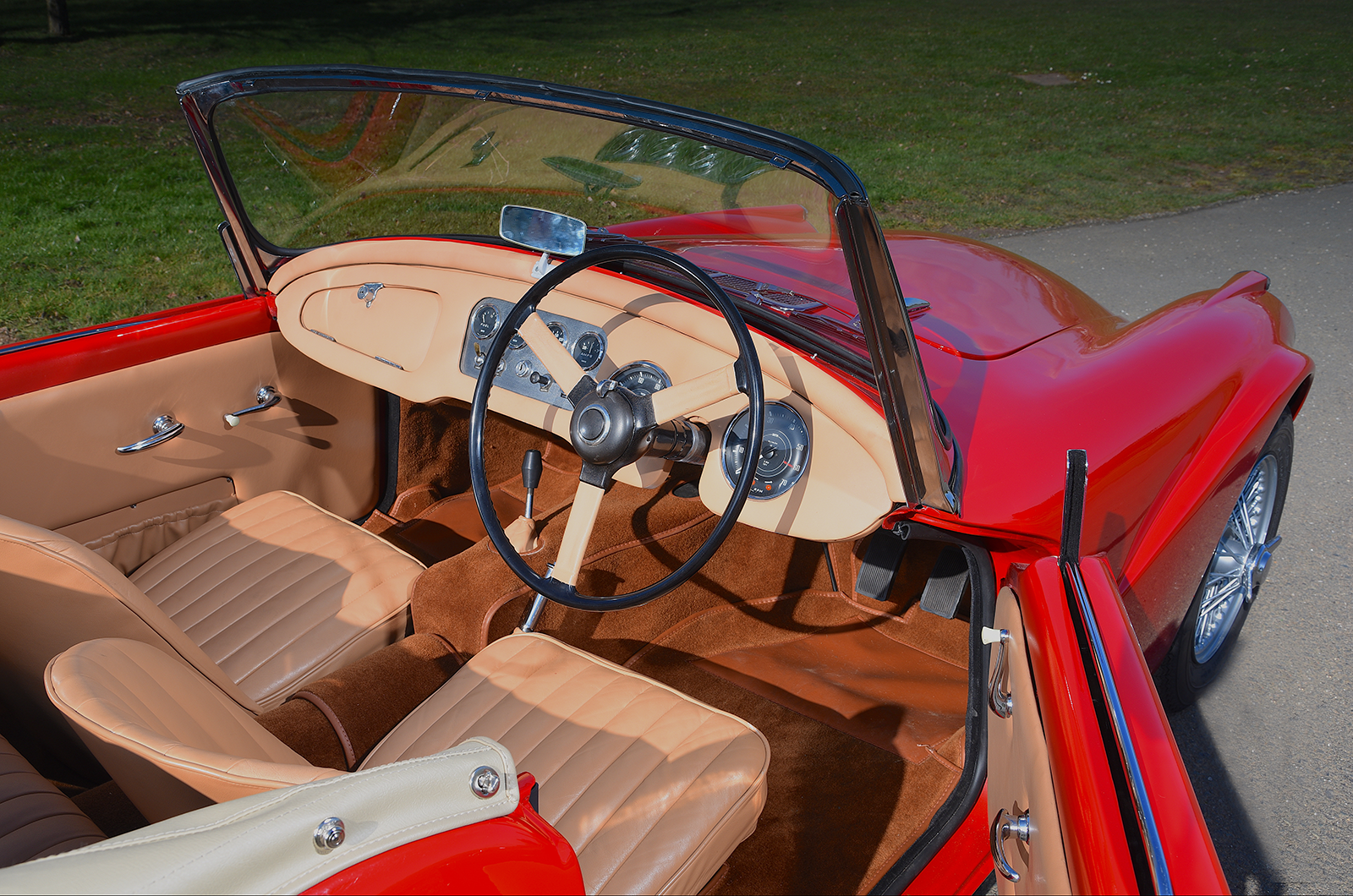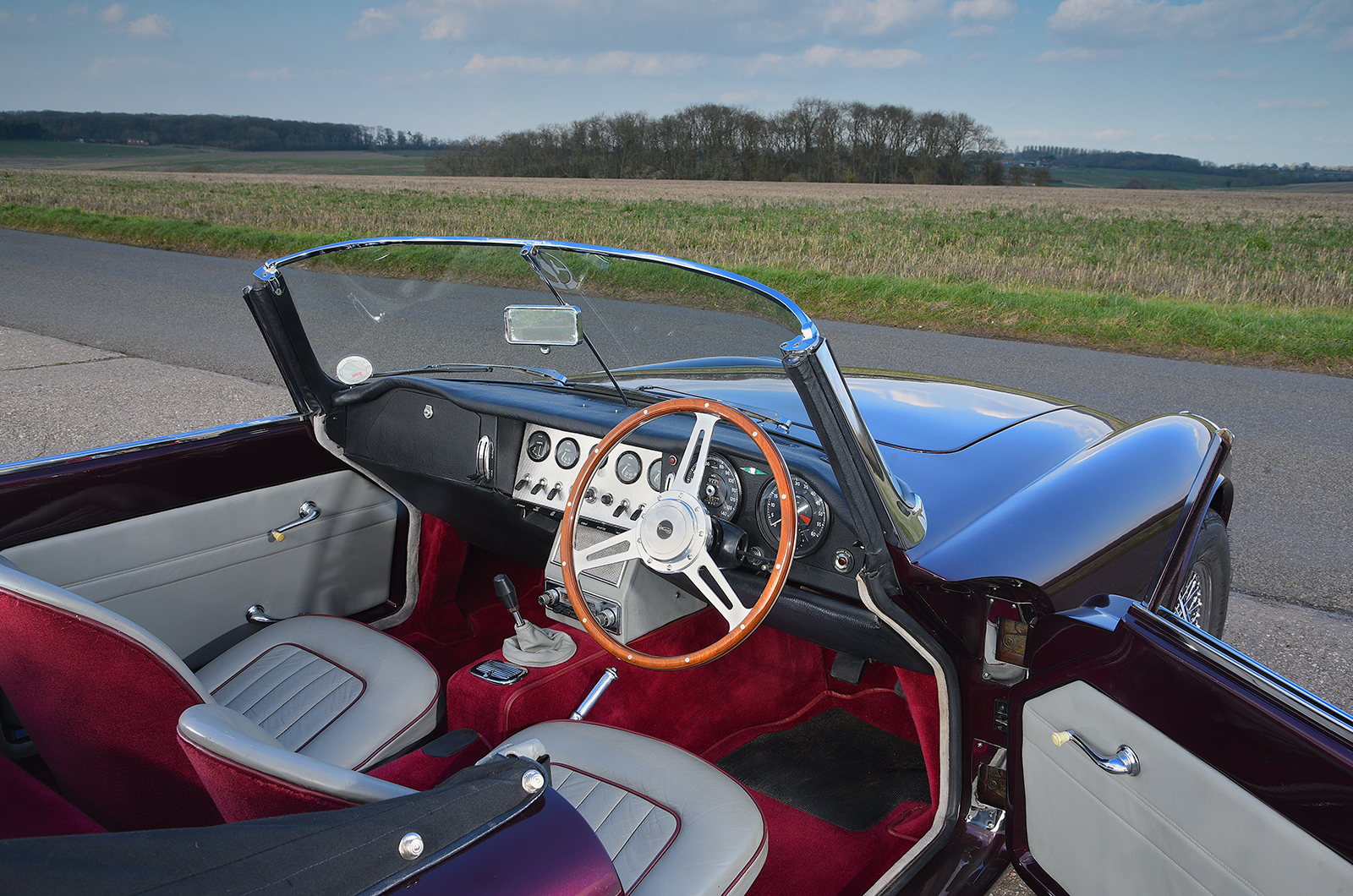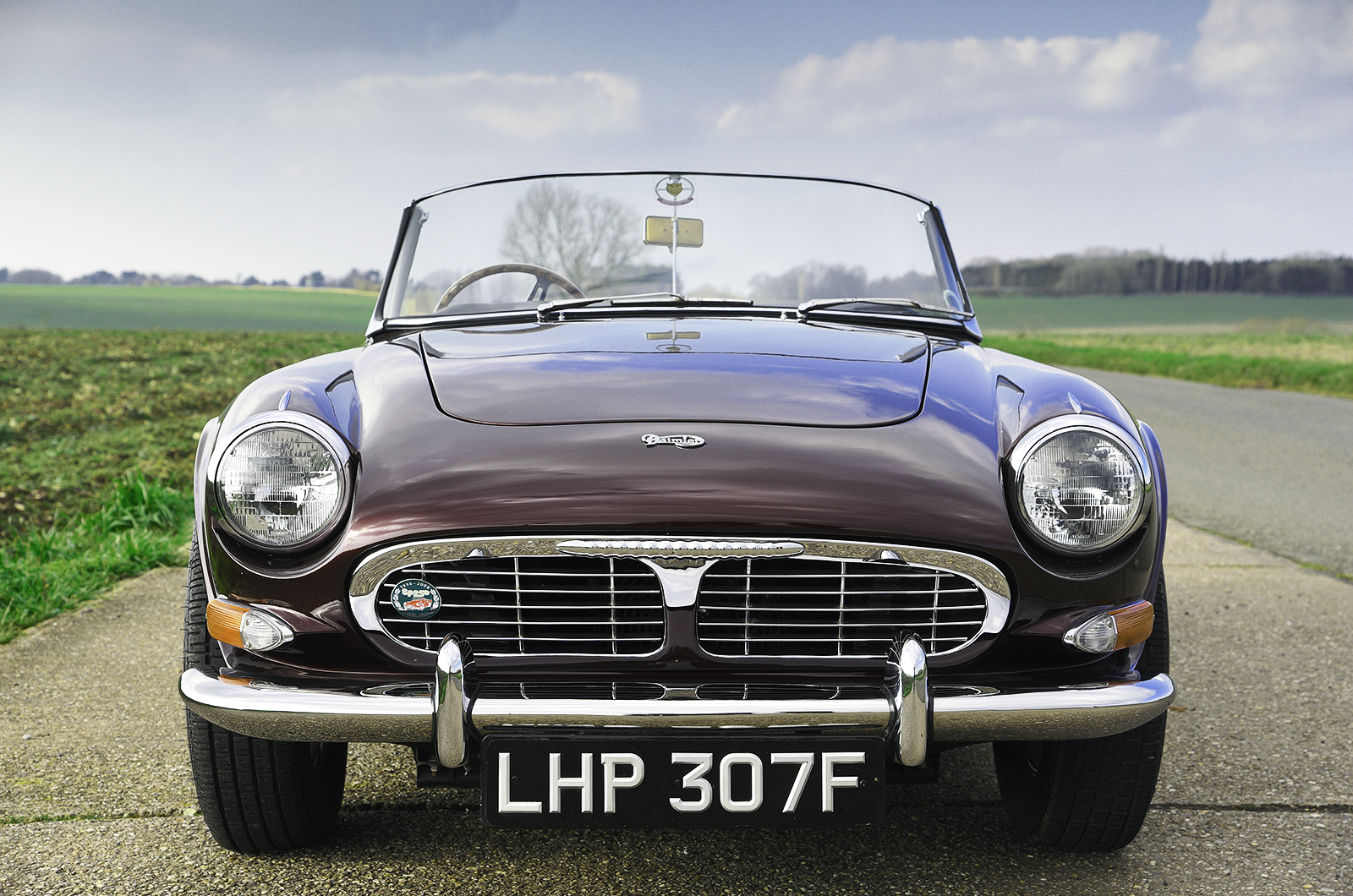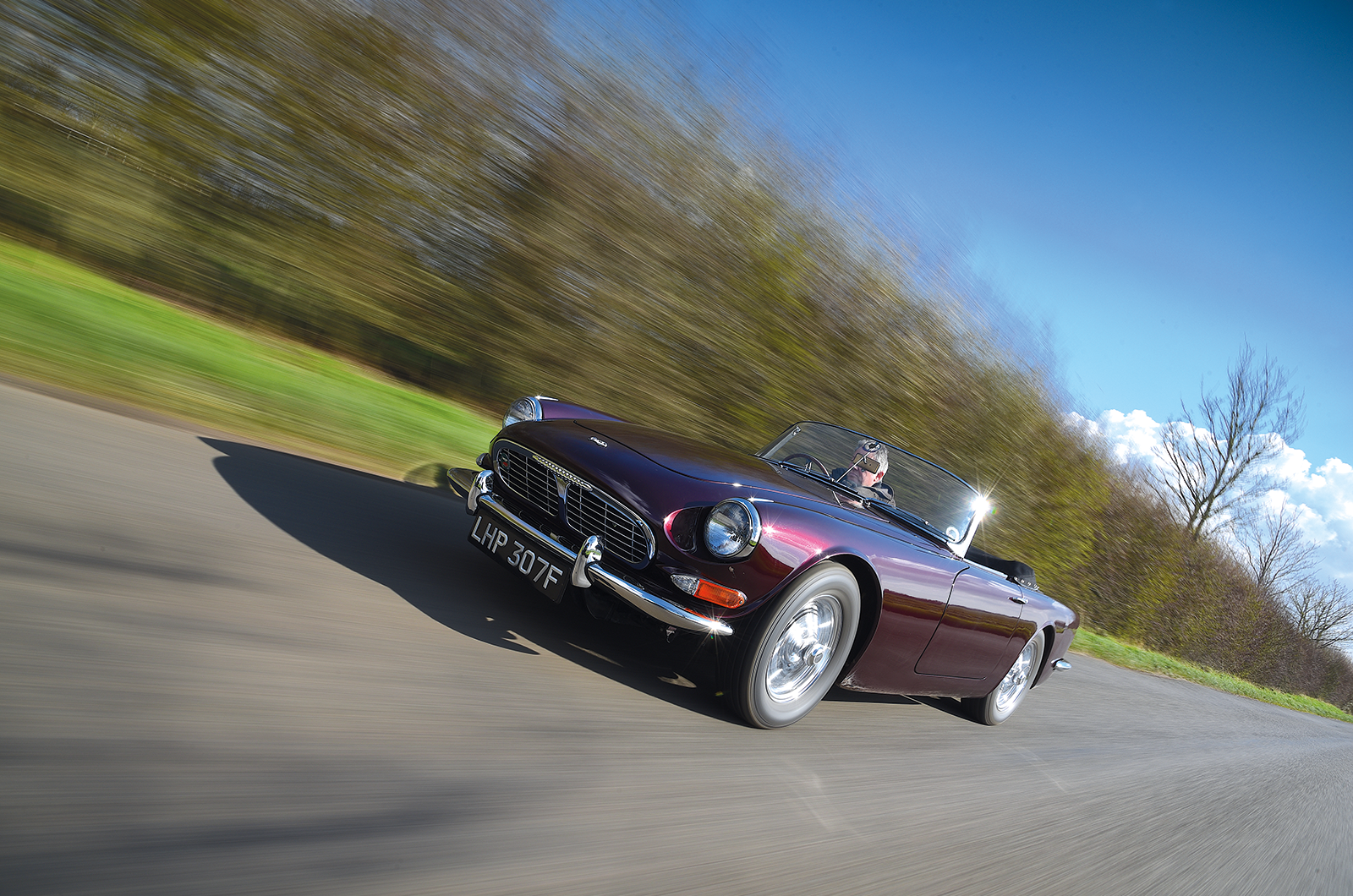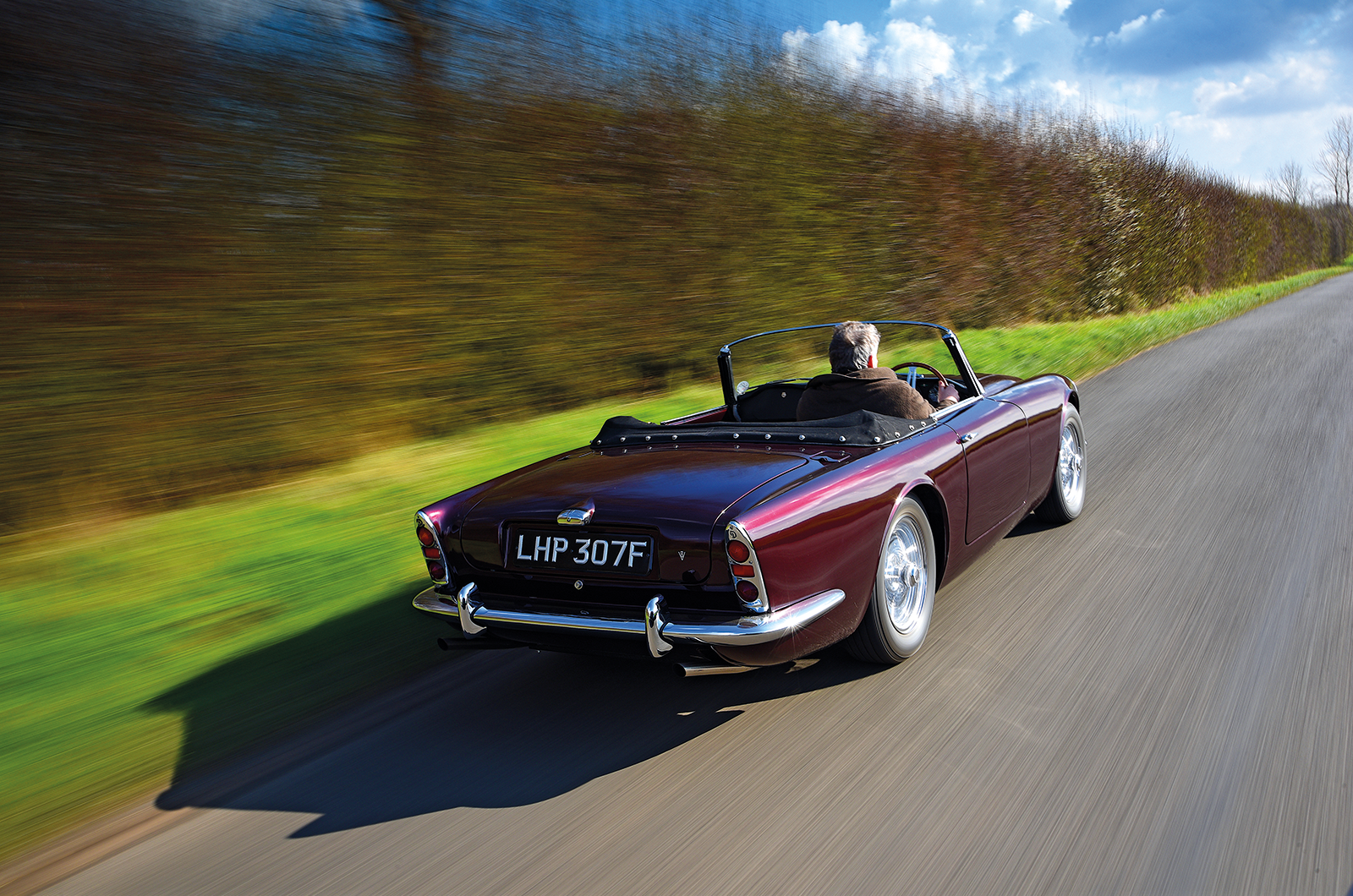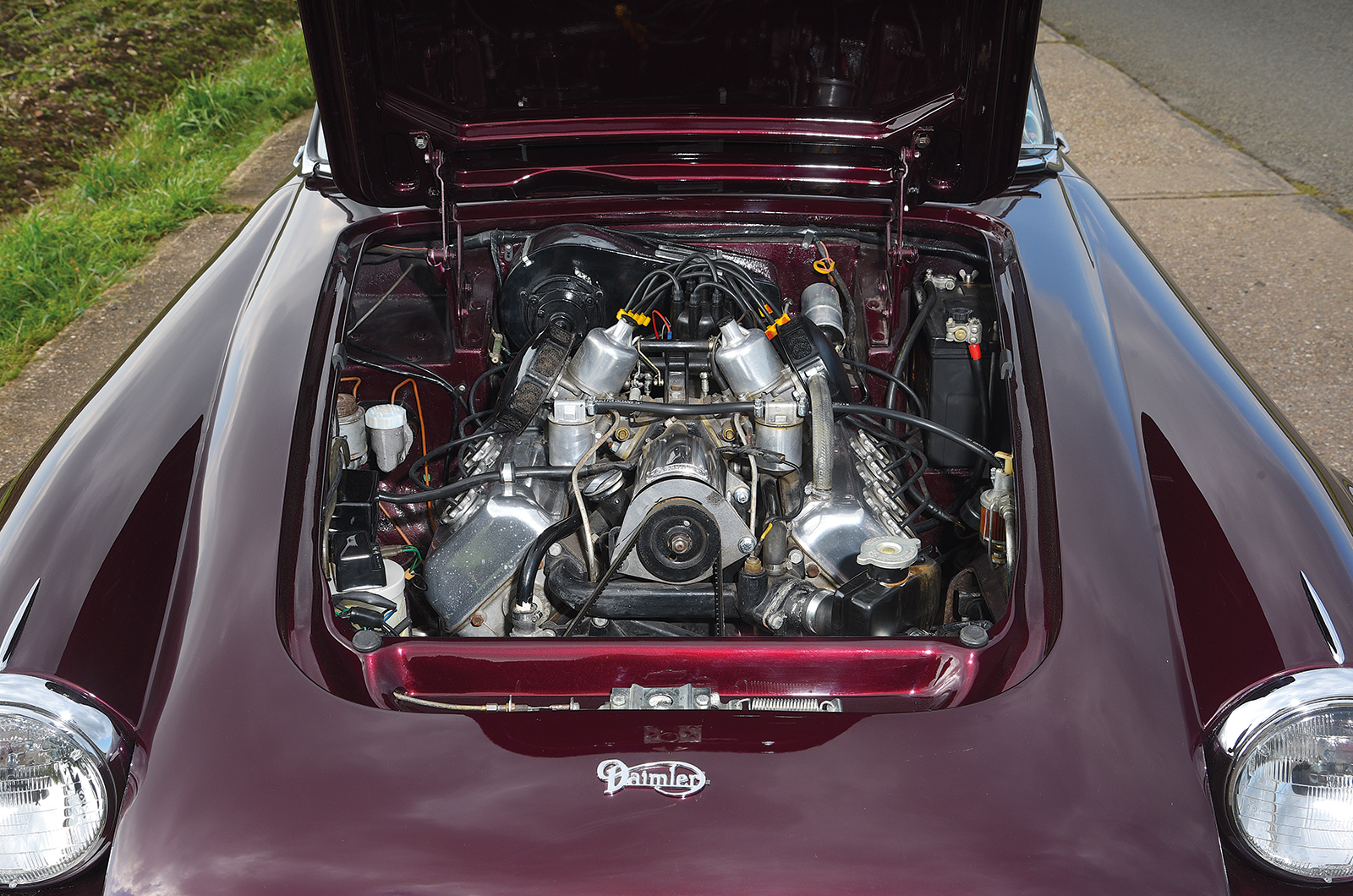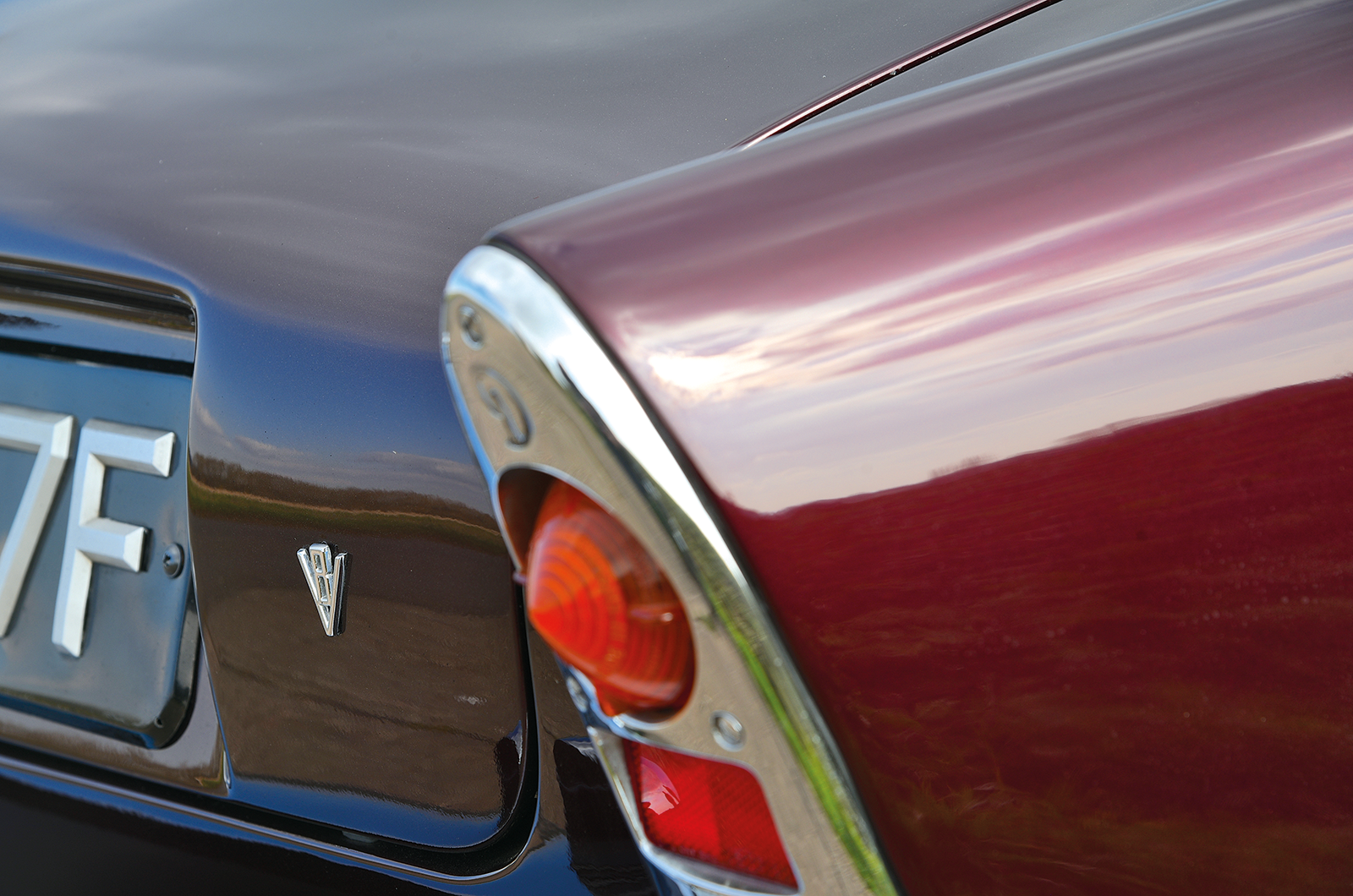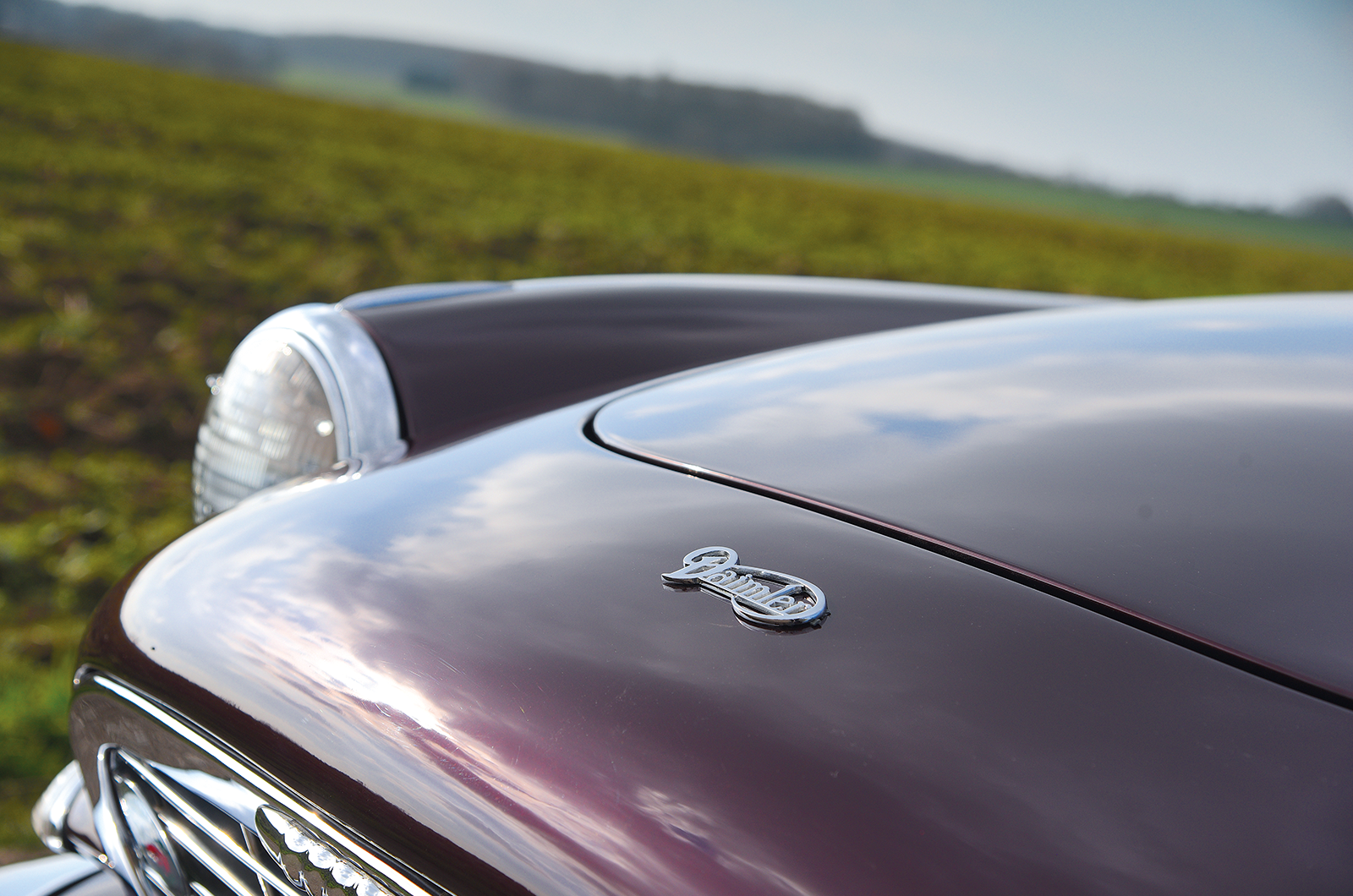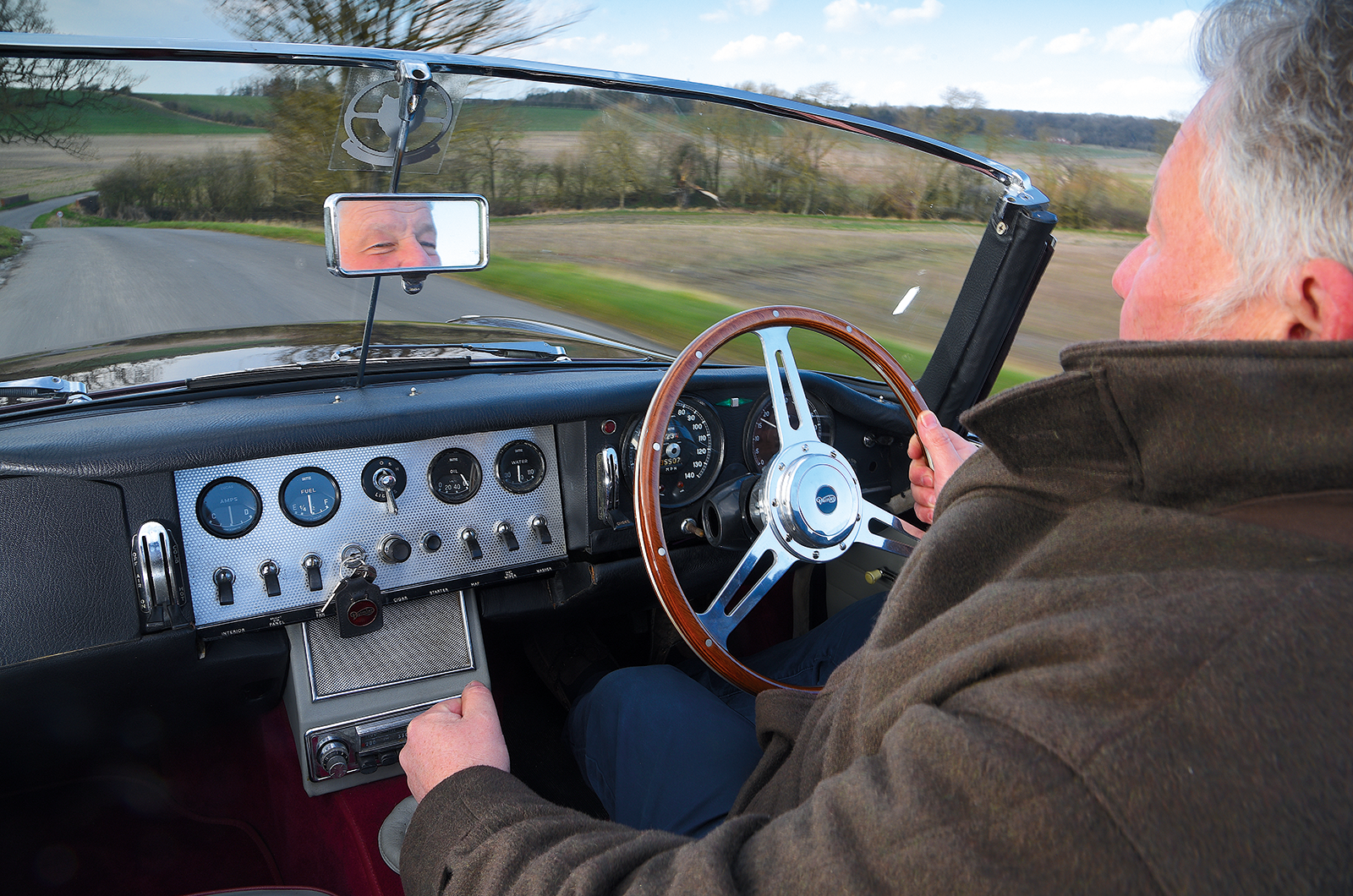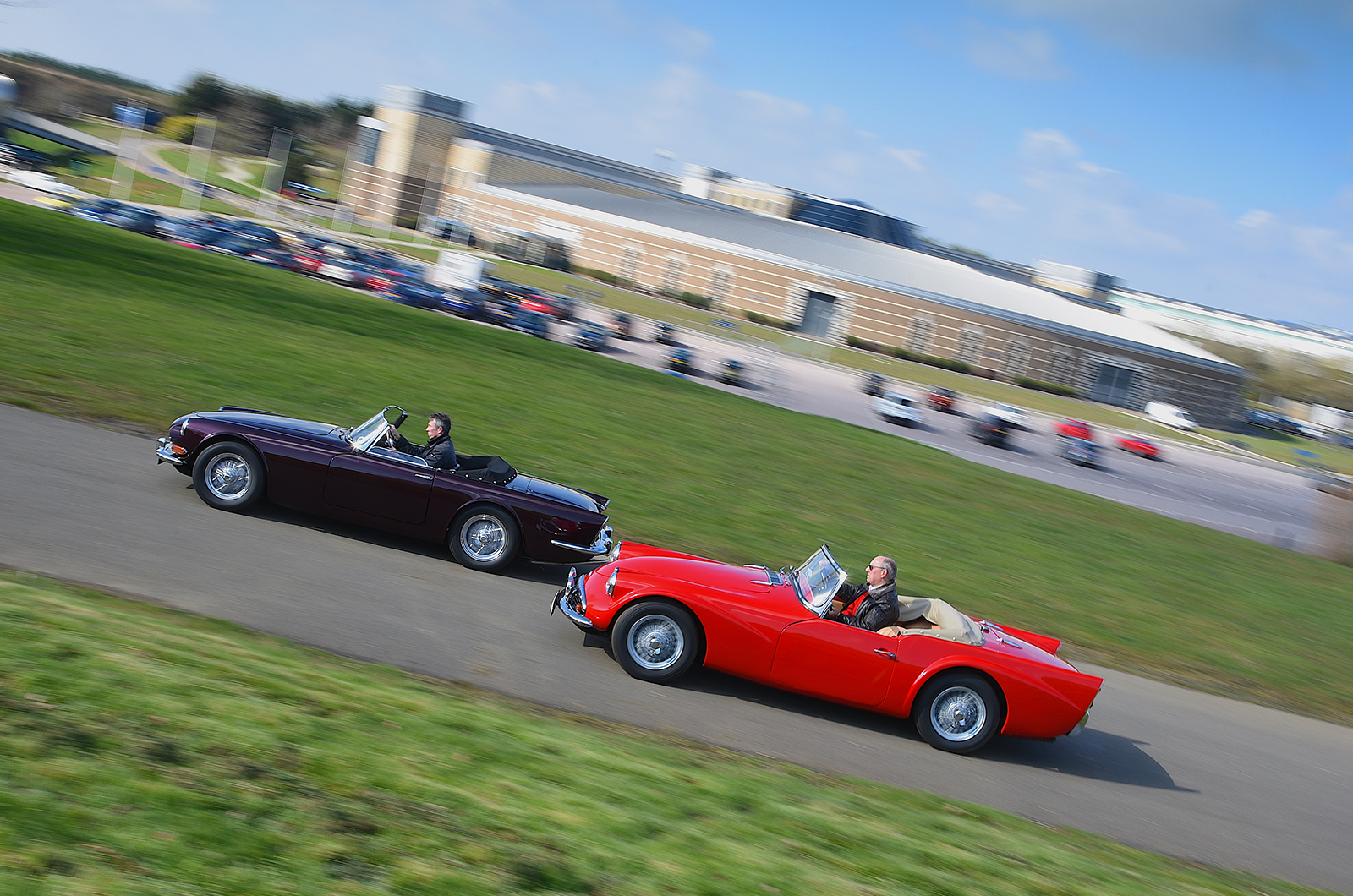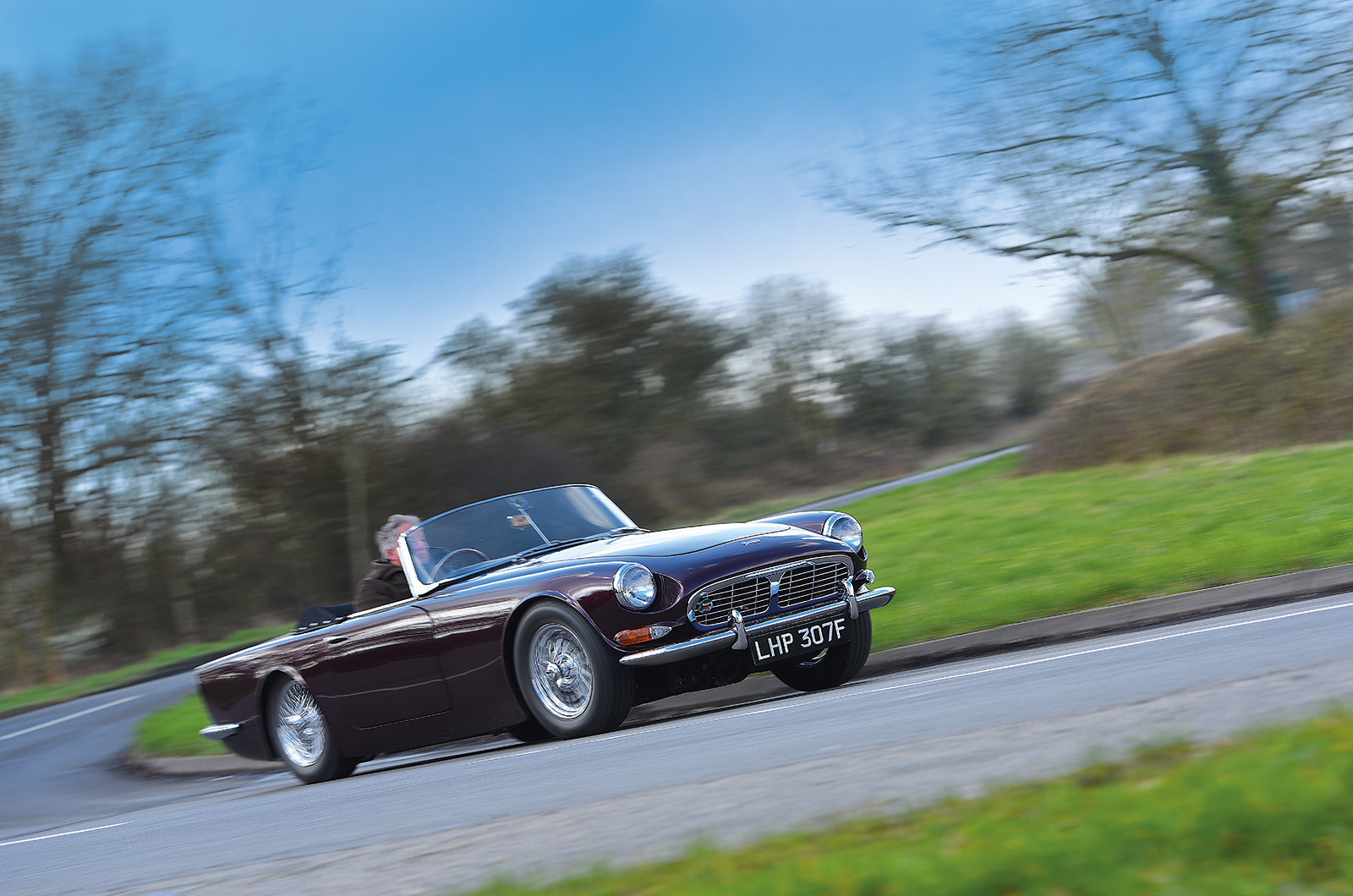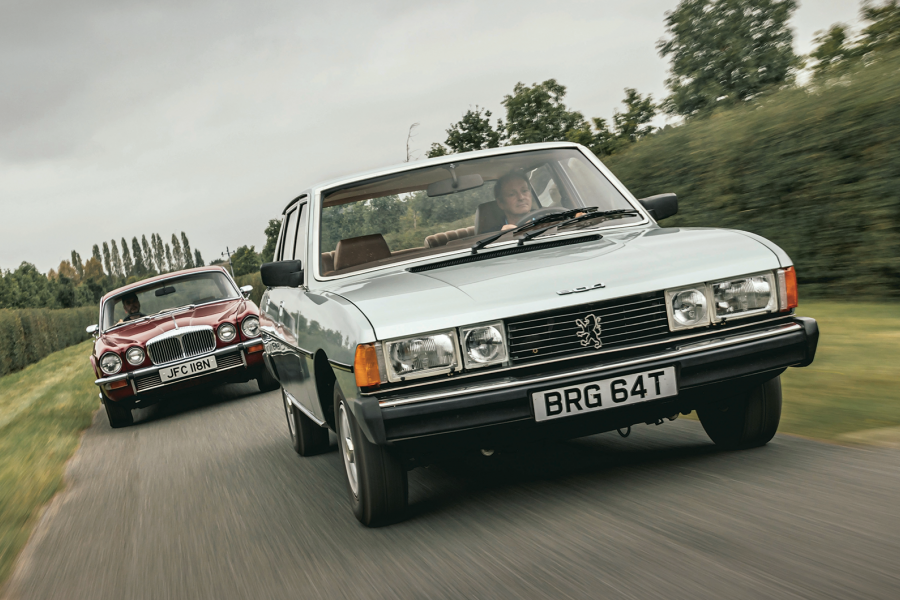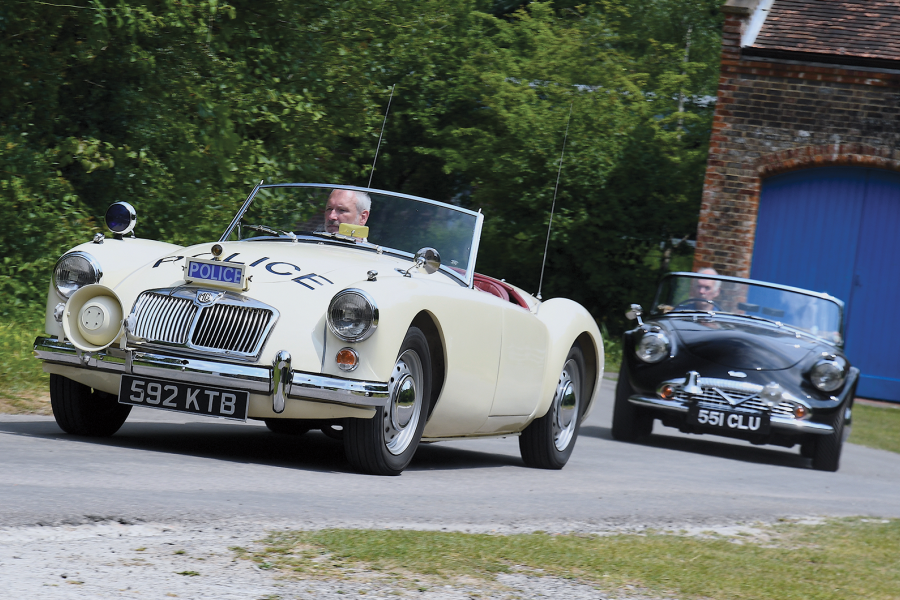What’s more, those who don’t know anything about cars tend to love the looks of the thing, with almost no exceptions.
With its fins, frills and superfluous mouldings, however, the SP250 as produced by Daimler was styled for a 1950s sensibility that was already on the wane.
In contrast, Lyons’ interpretation is so restrained and conservative that it walks a fine line between blandness and beauty, but it is a good-looking car with no bad angles.
The front sidelights of the SP252 are another loan from the E-type parts bin
Somebody spent a lot of money reproducing the original mock-up grille in chromed steel, with the added artistic licence of Daimler flutes. I would have gone with the simpler type used on 100003, even if it does look more like an MGB.
It is easy enough to spot the production Jaguar parts, such as the cut-down S-type bumpers and the front sidelights from the E-type.
Inside, it has an early E-type dashboard but has lost its big bus-driver sprung steering wheel in favour of a wooden job that tends to go with the rack-and-pinion conversion.
The seats are standard SP, but the small rear bench has been abandoned in favour of a carpeted parcel shelf.
The upright seating position is matched by the flat dashboard, also sourced from the Jaguar E-type
I have always enjoyed driving Darts and, apart from the steering, the 250 and the 252 are not very different once you get under way.
Despite the prosaic-sounding suspension – wishbones up front and a leaf-sprung live rear axle – you can hustle them with confidence, the benefits of the rack on the 252 being most evident at lower speeds, when it is much lighter.
You feel you are sitting ‘on’ these cars rather than ‘in’ them but, while it doesn’t pretend to be an Elan or even an E-type, the Dart is stable, safe and undramatic to drive in a manner that is always enjoyable, at least within the limits of the suspension travel on a bad road.
Interestingly, the SP252 is the only Dart I have driven where the door actually has sprung open on the move!
SP250 and SP252 united
The engines really are turbine-smooth and uniquely high-revving for 1960s V8s, yet have the sort of limousine torque that means you can drive ever so quietly and politely in top from 1000rpm.
The secrets of this refinement and efficiency lie in its oversquare dimensions; the hemispherical combustion chambers; short, light pushrods; and an inlet manifold design that allows for even mixture distribution.
The gearbox is as ordinary as the engine is distinguished, but it goes along way towards making up for its easily beaten synchromesh by having such well-plotted ratios that third gear is good for 100mph.
The fate of the SP252 lay firmly in the financial and practical issues the car raised: it was powered by an engine that was tooled up for no more than 140 units a week and was already proving popular in the Jaguar Mk2-based Daimler V8-250 saloon.
Was the SP252 a missed opportunity?
At a time when Jaguar could not produce enough E-types to satisfy demand, it didn’t make sense to become distracted by a car that was more expensive, in terms of man-hours, to build.
The good news is that the SP252 survives as a fascinating ‘what might have been’ in the colourful story of this misconceived, and initially even misnamed, glassfibre-bodied two-seater that has many more devoted fans today than it had in period.
I remain one of them.
Images: Will Williams
READ MORE
Sixties summer stunners: Herald vs Beetle vs Caravelle
This unassuming Austin-Healey 100 is a pioneering privateer
Triumph GT6: Canley’s super six
Martin Buckley
Senior Contributor, Classic & Sports Car
